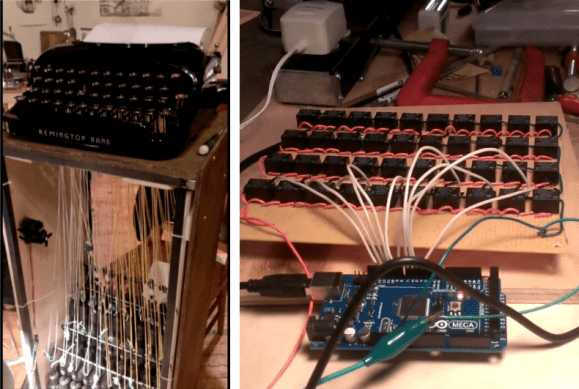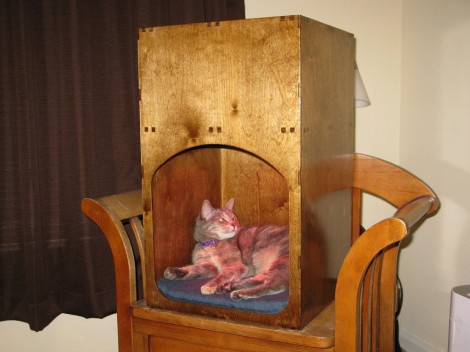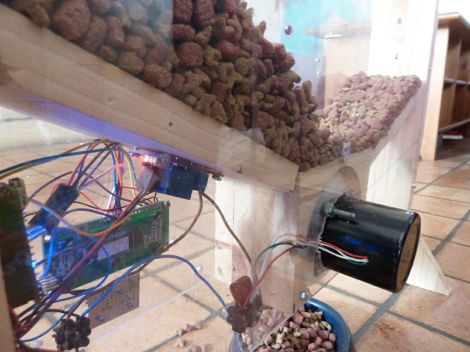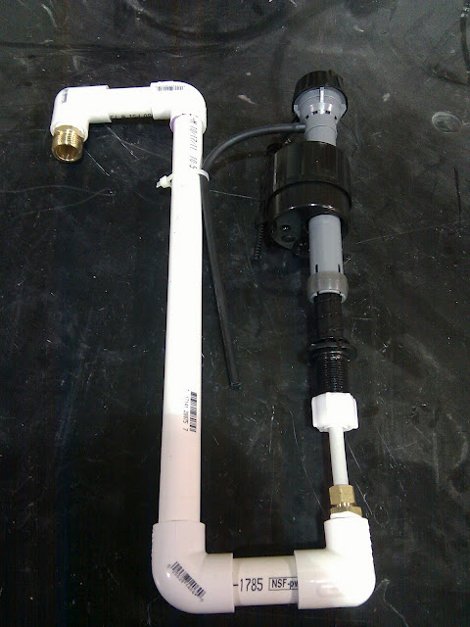
Check out all the work going on in the cabinet below this typewriter. The hack which automates a mechanical typewriter is for an art installation, but wouldn’t it be fun to build one of these to use as a résumé printer? It really makes us wish we had an old typewriter sitting around.
It would have been much easier to patch into an electric typewriter, but we have seen the string trick used on those as well. In this case a loop of string attaches to the the bar under each key, allowing a pull from below to type the character. An automotive door lock actuator ([Harvey Moon] tells us they’re not solenoids) connects to the other end of the string for every key. But then you’ve got to have a way to drive the actuators and that’s where the protoboard full of forty relays seen to the right comes into play. That image, which was taken from the demo video after the break, shows the board being testing. We’d guess more wires are added later to multiplex the array as we can’t figure out how the Arduino manages to drive all forty of them as shown. One thing we are sure about, the completed project looks and sounds amazing!

















